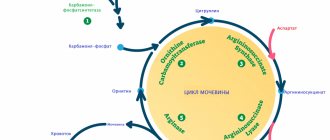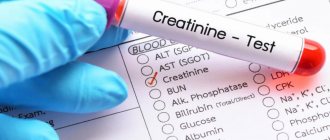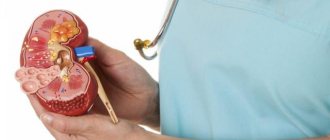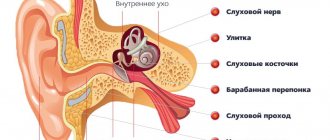1.General information
For many people, the diagnosis of gout is associated primarily with joint disease. Less known is the fact that gout is almost always (more than 80% of cases) caused by an increased level of uric acid in the blood (hyperuricemia) and is accompanied by simultaneous kidney damage. Relative to the latter trend, estimates of occurrence vary widely (30–80%); some authors even estimate this connection as one hundred percent.
One way or another, gouty kidney, or urate nephropathy, which is a more precise and correct term, is a very common type of kidney pathology, given that up to 2% of the world's population suffers from gout.
It is known that gout affects men several times more often than women, and it usually begins at the age of 25-35 (in women, during menopause; in addition, occasionally a hereditary juvenile form occurs in men). And although the etiopathogenetic mechanisms of the development of gout, damage to the joints and internal organs in this serious illness remain the subject of intensive scientific research, the connection with urolithiasis, kidney dysfunction and, ultimately, with renal failure
A must read! Help with treatment and hospitalization!
GOUT. AND IT'S ALL ABOUT HER...
Then it was called the “disease of kings” due to the fact that the main cause of its occurrence was considered to be excess in food and alcoholic beverages. However, not all so simple…
GOUT AND ARTERIAL HYPERTENSION
“Currently, due to the increasing incidence of gout (1–3% per year) and the high risk of cardiovascular complications associated with this disease, gout is considered an important medical and social problem,” says Olga Yuryevna Maiko , prof. Department of Polyclinic Therapy, Orenburg State Medical Academy, Doctor of Medical Sciences She explains:
- In patients with gout and asymptomatic hyperuricemia (increased levels of uric acid in the blood) in combination with arterial hypertension (AH), direct correlations with obesity, lipid metabolism disorders, and target organ damage were revealed.
- In these categories of patients, a more pronounced increase in blood pressure (BP) is observed with a predominance of unfavorable changes in the daily profile of the non-dipper type (insufficient decrease in blood pressure at night) and night-picker (night-time increase in blood pressure).
- In patients with gout, changes in the daily blood pressure profile were characterized by a pronounced decrease in the degree of nocturnal decrease and an inversion of the daily rhythm of SBP and DBP.
These conclusions are based on the results of a number of studies that indicate that hyperuricemia (HU) is a stimulator of the development of cardiovascular diseases and death in patients with arterial hypertension and congestive heart failure, and can be considered as an independent risk factor for cardiovascular complications.
Thus, the frequency of hypertension in patients with gout ranges from 36 to 58%, and in combination with metabolic syndrome increases to 72%.
GOUT AND HYPERURICEMIA
Most studies suggest that hyperuricemia is the main cause of gout. And here, when making a diagnosis, one should be guided by the fact that the maximum value for a normal level of uric acid is 360 micromoles/liter (6 mg/dL) for women and 400 micromoles/liter (6.8 mg/dL) for men.
What causes hyperuricemia? Here are the main factors that experts highlight:
- defects in genes responsible for the activity of enzymes affecting both the synthesis of uric acid (UA) (overproduction) and its transport in the kidneys (hypoexcretion);
- diseases accompanied by massive breakdown of nucleotides from cell nuclei (hyperuricemia), namely: blood diseases, lymphoproliferative diseases, severe psoriasis, sarcoidosis, hypothyroidism, hyperparathyroidism, chronic renal failure, congestive heart failure, gestosis, obesity, as well as chemotherapy and radiation therapy ;
- drug hyperuricemia that occurs after long-term use of diuretics, anti-tuberculosis drugs (pyrazinamide and ethambutol), cyclosporine A, riboxin, rutin, sildenafil, statins .
Uric acid is excreted from the body either by the kidneys (80%) or the colon (20%).
It is important that hyperuricemia increases the risk of arterial hypertension by 2–3 times.
URIC ACID THREATENS THE KIDNEYS!
Dissolved uric acid is a biologically active molecule that can have a prohypertensive effect through its effect on the vascular endothelium, incl. kidney As a result, the kidneys are affected in all patients with gout, with the involvement of glomeruli, tubules, stroma and blood vessels in the process.
With gout, morphological changes :
- vascular nephrosclerosis with glomerular hyalinosis and sclerosis of the afferent arteries;
- dystrophic changes develop in the tubules;
- urate deposition occurs in the parenchyma, in epithelial cells, tubular lumens and in the interstitial stroma. Necrosis develops around with productive inflammation and the formation of giant cells of foreign bodies;
- Uric acid sand and stones form in the pelvis. In the future, pyelonephritis with shrinkage of the kidney may occur. Macroscopically, on a section of the kidneys, urates are visible in the medulla in the form of yellowish-white stripes;
- in some cases, with gout in the kidneys, changes characteristic of glomerulonephritis are detected.
In the origin of the latter, the role of immune complex mechanisms has been proven. Clinically, it is characterized by a latent course with a predominance of hematuria and steady progression towards chronic renal failure. A feature of glomerulonephritis in gout are episodes of reversible renal dysfunction.
And here it should be taken into account that gouty nephropathy is a collective concept that includes all renal pathology observed in gout (tophus in the renal parenchyma, urate stones, interstitial nephritis, glomerulosclerosis and arteriosclerosis with the development of nephrosclerosis).
Three options for kidney damage due to gout and purine metabolism disorders:
- slowly developing chronic interstitial process,
- formation of stones,
- acute kidney blockade by uric acid with the development of acute renal failure.
RELATED DISEASES WITH GOUT
They are few, but they are significant. So, with gout, the frequency of concomitant diseases as a percentage (%) is as follows:
- obesity - 80;
- insulin resistance - 60;
- diabetes mellitus type II - 20;
- high-purine dietary stereotype - 100.
Very often, gout is accompanied by a whole “bouquet” of concomitant diseases.
DIAGNOSIS OF GOUT
There are several approaches here. The Russian “gold standard” provides :
- general blood analysis;
- general urine analysis;
- blood chemistry;
- Rehberg and Zimnitsky samples;
- X-ray images;
- polarizing microscopy of synovial fluid and other tissues.
This set of tests helps determine not only the presence of gout, but also its type :
- metabolic;
- renal;
- mixed.
At the same time, there are so-called “Roman” criteria for the diagnosis of gout, adopted in 1961. They include:
- Detection of hyperuricemia, when uric acid in the blood is more than 0.42 mmol/l (7 mg%) in men and more than 0.36 mmol/l (6 mg%) in women.
- Presence of gouty nodules (tophi).
- Detection of urate crystals in synovial fluid or tissues.
- A history of acute arthritis, accompanied by severe pain, that began suddenly and subsided within 1–2 days.
The diagnosis is considered definite if 2 of the listed criteria are positive.
American Rheumatology Association Diagnostic Criteria:
- The presence of characteristic crystalline urates in the joint fluid.
- Presence of tophi (proven) containing crystalline urates, confirmed chemically or by polarization microscopy.
- Presence of 6 out of 12 signs below:
- history of more than one acute attack of arthritis;
- maximum inflammation of the joint already in the first day;
- monoarticular nature of arthritis;
- hyperemia of the skin over the affected joint;
- swelling or pain localized in 1 metatarsophalangeal joint;
- unilateral damage to the joints of the arch of the foot;
- nodular formations resembling tophi;
- hyperuricemia;
- unilateral lesion of the 1st metatarsophalangeal joint;
- asymmetric swelling of the affected joint;
- detection on radiographs of subcortical cysts without erosions;
- lack of flora in the joint fluid.
A combination of 6 or more signs confirms the diagnosis.
The given diagnostic criteria, naturally, do not cover all variants of the disease and do not take into account all the difficulties in making a differential diagnosis.
Treatment of gouty nephropathy involves a whole range of measures :
- diet - it prescribes the avoidance of meat extracts, fried meat, offal (liver, kidneys), smoked meats, canned meat and fish, spicy salted fish, hot seasonings, cocoa, chocolate, coffee, alcoholic beverages, legumes. But grapes, lingonberries, eggplants, and watermelons have a uricosuric effect (i.e., promoting the removal of uric acid from the body). For arterial hypertension, which very often accompanies gout, it is necessary to limit table salt. Many experts recommend consuming fish oil (polyunsaturated fatty acids) to suppress the generation of pro-inflammatory cytokines by mesangiocytes;
- inhibition of uric acid synthesis by taking uricodepressants;
- increasing uric acid excretion with uricosuric drugs;
- chemical decomposition of uric acid compounds.
WHAT ABOUT MEDICATIONS?
There is a variety here that allows you to individually, depending on the test results, choose the most appropriate drug therapy:
- orotic acid (potassium orotate, oroturic, lactinium) - suppresses the synthesis of pyrimidine nucleotides;
- allopurinol;
- probencid, sulfinpyrazone can be used as an alternative to allopurinol in patients with normal renal function;
- benzbromarone can be prescribed to patients with mild and moderate renal failure, but due to hepatotoxicity, treatment monitoring is required;
- blemarene (sodium citrate). Its action is based on changing the pH of urine from acidic to neutral or slightly alkaline values, which provides conditions for dissolving stones and inhibiting the crystallization process;
- uralite (potassium sodium hydrogen citrate) regulates the pH of urine and maintains a shift in the reaction to the alkaline side for a long time (pH 6.2–7.5), while uric acid salts are in solution and do not form stones;
- Urisan can be prescribed in addition to drug therapy for seasonal increases in uric acid levels;
- Prolit is recommended as a stone-expelling, stone-dissolving and anti-inflammatory agent for patients with urolithiasis.
But spill oxidizes urine and therefore it is better to administer it with urisan or citrate mixtures;
- losartan and fenofibrate have a moderate uricosuric effect, which allows their use in patients with gout in the presence of hypertension or dyslipidemia.
TREATMENT OF ACUTE URURICAL NEPHROPATHY IN PATIENTS WITH GOUT
- To reduce the concentration of uric acid in the renal tubules, a large amount of fluid is given intravenously (IV) and furosemide is prescribed to ensure urine output is greater than 100 ml/h.
- Take 240–500 mg of acetazolamide orally every 6–8 hours. and intravenous administration of sodium bicarbonate (2 ampoules of 44.6 mmol bicarbonate per 1 liter of 5% glucose) alkalinize the urine and increase the solubility of uric acid. It is important to prevent hypervolemia and a decrease in urine pH below 7.
- In addition, to reduce the flow of uric acid into the kidneys, allopurinol is prescribed in a single dose of 8 mg/kg. If renal function is not restored, subsequent doses are reduced to 100–200 mg/day, because the active metabolite of allopurinol, oxypurinol, accumulates in renal failure.
- Antispasmodics. You can take any drug in this group.
- If the above measures are ineffective, hemodialysis is performed.
Based on the materials of the symposium “Gout in clinical practice. European and national recommendations”, held within the framework of the XI National Congress of Therapists
2. Reasons
Uric acid is one of the bioactive substances necessary for the body; in water it dissolves slightly and is broken down by special enzymes, and in the blood it is present in the form of salts (urates). Urate crystals, accumulating in the joints, lead to the development of gouty arthritis, the second most common joint disease after rheumatic arthritis. An increase in the concentration of uric acid compounds may be due to a congenital deficiency of the enzymes that break it down (for the production of which the “male” X chromosome is responsible, which explains gender differences in morbidity). Statistical correlations of gout with hypertension, alcoholism, congenital abnormalities of the structure and functioning of the renal tubules, certain types of cancer pathology, obesity and other factors have also been identified and confirmed.
Visit our Thoracic Surgery page
3. Symptoms and diagnosis
Hyperuricemia and hyperuricosuria themselves (abnormal levels of crystalline urates in the blood and urine, respectively) may be asymptomatic for a long time. Urate nephropathy manifests itself, as a rule, acutely, against the background of an attack of gouty arthritis. Renal colic, symptoms of pyelo- or glomerulonephritis, and a sharp reduction in the volume of urine excreted are noted. The color of the urine may change (to dark brown), and laboratory testing sometimes reveals the presence of protein and blood in the urine. Urate nephrolithiasis (presence of calculi, stones in the kidneys and/or urinary tract) is the second most common symptom found in gouty kidney. The acute form of urate nephropathy easily becomes chronic and results in pyelonephritis, glomerulonephritis, pyonephritis with varying degrees of renal failure.
Diagnosis of a gouty kidney can be very difficult if there is no pronounced joint damage specific to gout. A thorough examination of the medical history and, of course, “targeted” laboratory studies of the composition of blood and urine are necessary. According to indications, ultrasound, radiography and other imaging diagnostic methods are also prescribed.
About our clinic Chistye Prudy metro station Medintercom page!
4.Treatment
Therapy for urate nephropathy is always complex. It is necessary to control and relieve exacerbations of gout as the underlying disease, treatment and prevention of hypertension, and normalization of body weight. A diet is strictly required, which the doctor develops and explains on an individual basis (however, in any case, beer, certain types of fish and a number of other products that promote the production of uric acid are excluded). Sugar consumption is also sharply reduced, since there is a direct connection between the incidence of gout and diabetes. Diuretics (diuretics) and urostatics are prescribed - drugs that suppress the secretion of uric acid. Regular observation by a doctor of the appropriate profile and monitoring of laboratory tests are mandatory.
The prognosis is generally favorable, provided that all medical prescriptions are followed, especially those related to lifestyle and bad habits. In recent decades, significant advances have been made in understanding the etiopathogenesis and, accordingly, developing strategies for effective therapeutic control of renal (renal) functions in urate nephropathy.
Prevention
According to the same researchers from the American research center, there are a number of good and effective preventive measures that will significantly reduce the risk of developing pathology. You should drink more liquid, and we are talking mainly about ordinary clean water without any sweeteners. You should also abstain from alcohol, especially beer. Include more low-fat dairy products in your diet. The protein of these is considered the highest quality and healthiest. It will be an excellent means of preventing gout.
To avoid problems, you should limit your consumption of meat, poultry and fish. Of course, this does not mean that you have to remove them completely. But the portions should be smaller. You definitely need to watch your weight. Losing weight helps reduce uric acid levels in the body. But at the same time, you need to lose weight wisely - no fasting or dieting with sudden weight loss. Such stress in the body, on the contrary, can cause negative consequences and even increase uric acid levels.








